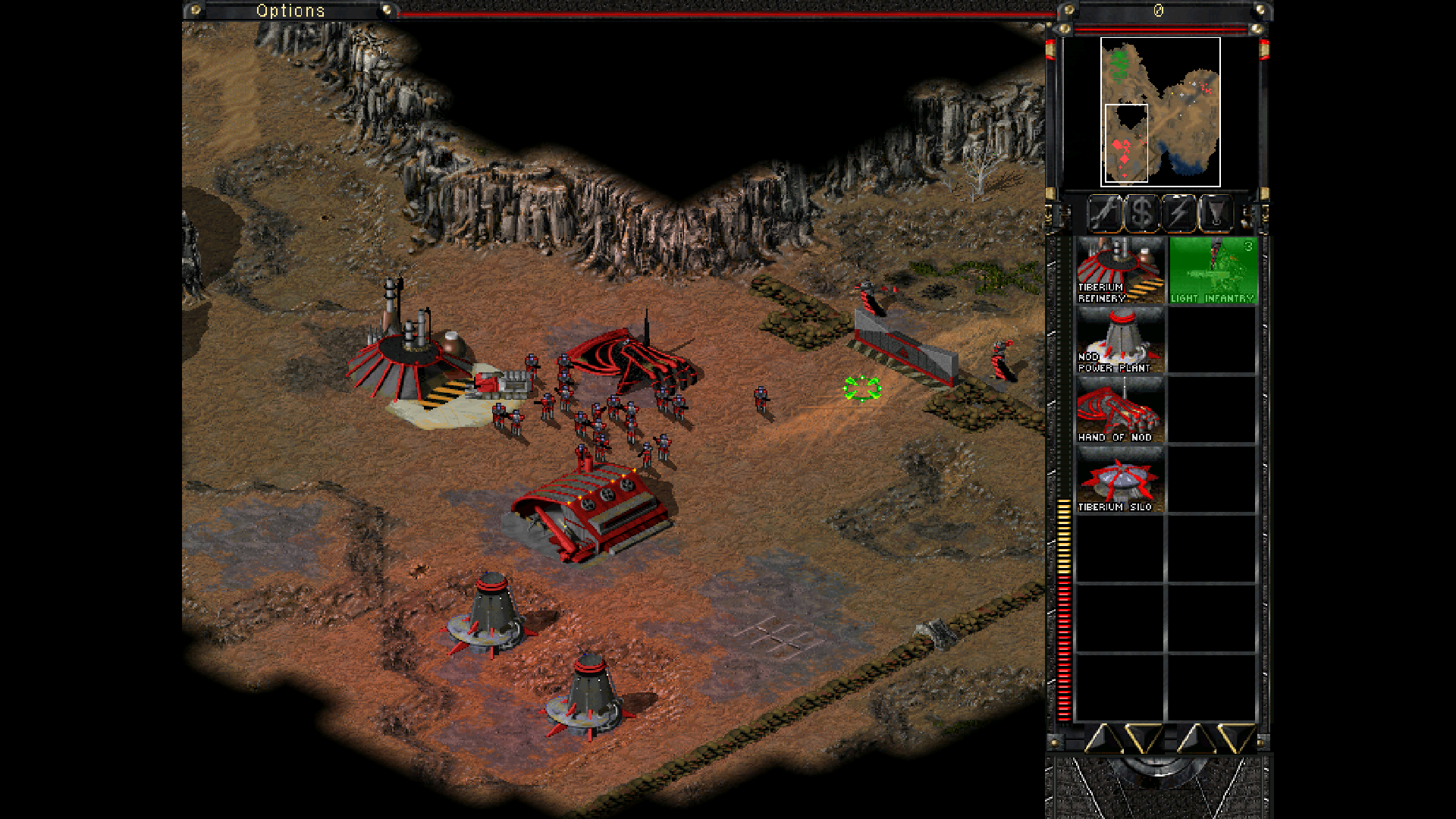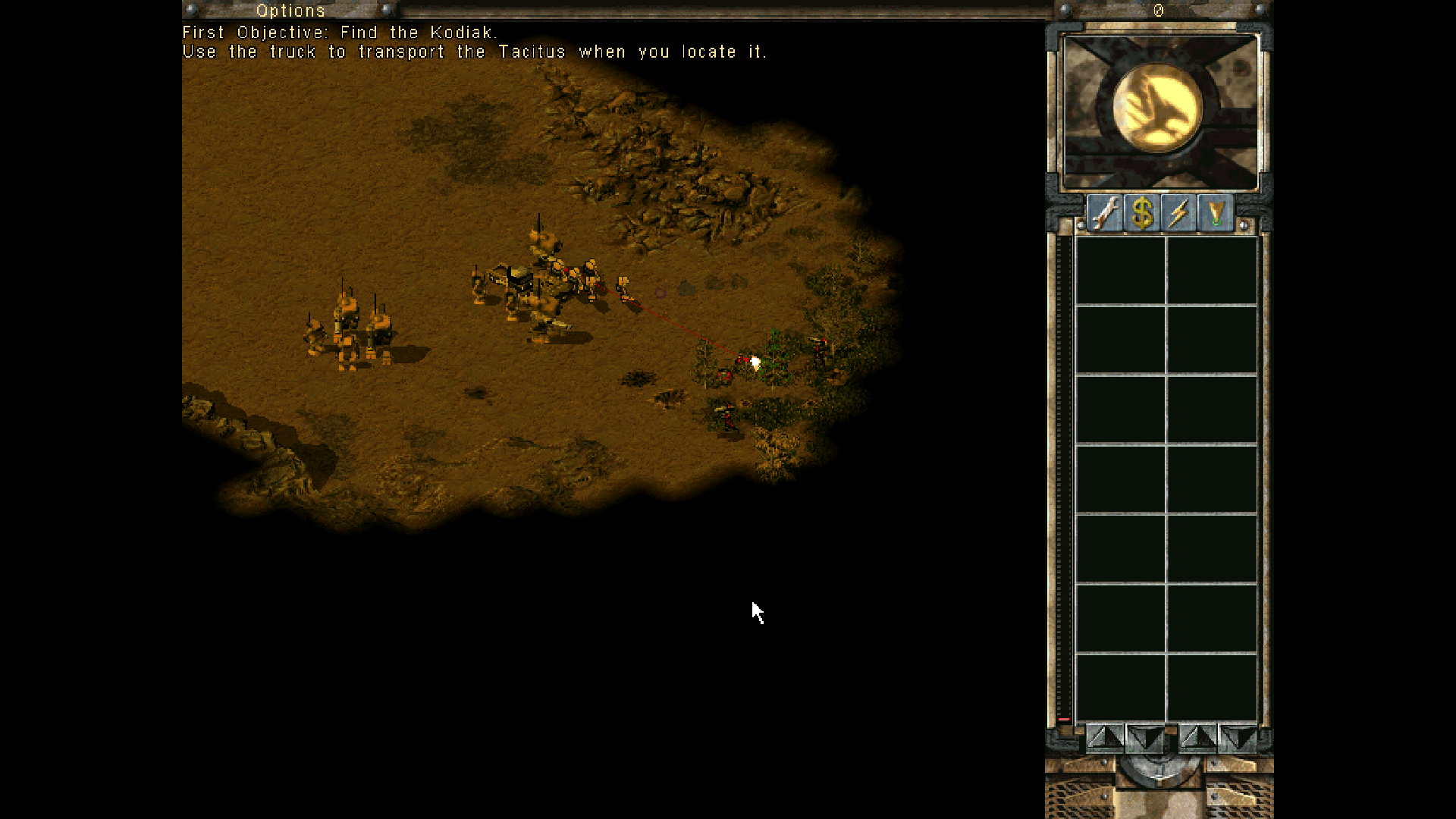Search
[{{{type}}}] {{{reason}}}
{{/data.error.root_cause}}{{{_source.title}}} {{#_source.showPrice}} {{{_source.displayPrice}}} {{/_source.showPrice}}
{{#_source.showLink}} {{/_source.showLink}} {{#_source.showDate}}{{{_source.displayDate}}}
{{/_source.showDate}}{{{_source.description}}}
{{#_source.additionalInfo}}{{#_source.additionalFields}} {{#title}} {{{label}}}: {{{title}}} {{/title}} {{/_source.additionalFields}}
{{/_source.additionalInfo}}- Details
- Category: Computer
- By Daniel Cullen
- Hits: 1224
Command & Conquer™ Tiberian Sun™ and Firestorm™ (PC)

Command & Conquer™ Tiberian Sun™ and Firestorm™
Developed By: EA Los Angeles
Published By: Electronic Arts
Released: March 7, 2024
Available On: Microsoft Windows
Genre: Real-Time strategy
ESRB Rating: Teen (Violence)
Number of Players: Singleplayer, Online Multiplayer
Price: $1.49 (part of a bundle on Steam)
Note: This review is based on the version made available on Steam (original release 1999/2000 for original and expansion respectively). The original printing release has been made freeware, this covers the modernized commercial version. Multiplayer was not tested due to requiring third party tools.
The original Command & Conquer (retroactively subtitled Tiberian Dawn) was a smash hit in 1995 despite being pretty basic on the surface in many regards. After making the Red Alert prequel games, Westwood decided to continue the Tiberium series of C & C games. Command & Conquer Tiberian Sun was the child of this effort, alongside its expansion pack Firestorm, and both turned out better in many ways.
Tiberian Sun is a sequel set in 2030, almost two generations after the events of the original game. Tiberium, which initially was a moderate concern but also of benefit, has become so severe a problem it has started turning massive amounts of the Earth's surface into a form uninhabitable to human life. The Global Defense Initiative (GDI), winners of the last war, have turned their focus to trying to secure the remainder of the Earth while halting and reversing Tiberium's spread. Meanwhile, the defeated Brotherhood of Nod has been reduced to a splintered remnant, kept under control by GDI planting double agents, and lost without its former leader Kane. However, Kane reemerges, helping to reunite the Brotherhood, declaring war on GDI once more. In the GDI campaign, one must blunt a new Tiberium War. In the Nod campaign, one must help Kane ensure a Tiberian Sun rises over humanity's future.
The Firestorm campaign is set sometime after the Tiberian Sun campaign (which combines elements of the Nod and GDI campaigns but defaults to the GDI victory). Both GDI and Nod are restructuring, and need to recover Nod's CABAL AI to achieve their goals. CABAL regardless of the campaign turns out to have its own agenda, forcing an unholy alliance of GDI and Nod to stop it.

Strong Points: Much improved gameplay over the original Command & Conquer; good map design; excellent soundtrack
Weak Points: Dreary and dark color palette
Moral Warnings: Real-time strategy violence; Nod campaign will require war crimes and attacks on civilians; some earthy if infrequent language ranging from d*mn to b***h; a scene of flirtation and some form-fitting outfits; Nod is portrayed as a religion with its leader making sacrilegious references to God; some graphic scenes of violence in the live-action cutscenes
The gameplay is much like the original game. You can play as GDI, a legally recognized force of the United Nations, or a quasi-religious terrorist army called the Brotherhood of Nod. Both sides have their own forces, with GDI leaning into power and efficiency, and Nod specializing in stealth and speed. The actual gameplay is like any real-time strategy game. The player must construct bases, defend key points, deploy troops, capture strategic assets, and otherwise secure victory for their side.
Underneath the hood of the game engine is a vastly upgraded version of the original Command and Conquer engine. Unlike Tiberian Dawn and Red Alert, the maps are no longer mostly flat looking with simplistic designs and crude approximations of height. The color palette has been expanded (though still tends towards darker colors), and animations are far more detailed for units. Especially notable is how bridges can be repaired, tunnels are now implemented, and terrain elevation is convincingly emulated. Pathfinding logic and general combat AI are somewhat less brainless than the prior games as well.
Graphically, the game style has shifted from a mostly modern-day look with some fantastical touches into a very hard sci-fi aesthetic. Both Nod and GDI deploy futuristic-looking troops, mechs, and cyborgs, and both the game maps and live-action cutscenes reflect the gameplay in showing off this sci-fi bent. The live-action cutscenes feature far better quality than the original game and now feature much higher production values and veteran actors. The only complaint is the colors are quite oppressively dark everywhere, with even daytime maps looking like they take place at night due to the darker color direction.
The music is again scored by Frank Klepacki, and he goes full tilt into techno, ambient tracks, and various esoteric offerings that fit the hard sci-fi theme. The sound effects and game voiceovers also reflect the new lean, though voiceovers for units tend to be limited, with both Nod and GDI units shared between factions reusing the same voice clips. The live-action cutscenes tend to be great though, with veteran voice actors like Micheal Biehn and James Earl Jones alongside Joe Kucan returning as Kane.

Higher is better
(10/10 is perfect)
Game Score - 88%
Gameplay - 17/20
Graphics - 8/10
Sound - 9/10
Stability - 5/5
Controls - 5/5
Morality Score - 58%
Violence - 3/10
Language - 6/10
Sexual Content - 8/10
Occult/Supernatural - 6/10
Cultural/Moral/Ethical - 6/10
This game, like all others prior, is primarily a mouse and keyboard game. It features early game tutorials to ease the player into the controls, and the user interface is simple to navigate. This game is very stable alongside its expansion and runs on super modest requirements. This title is not rated for the Steam Deck, though it can run on Linux with some tweaks.
Morally, there are going to be some issues.
Violence is real-time strategy style in gameplay, without blood and gore. The live-action cutscenes are a different story, with at least one guy shown with his throat getting slit (albeit briefly) and another getting rather nastily impaled, minus explicit details. As Nod you will occasionally be forced to attack civilians especially, GDI makes a point to avoid this.
Language is a tad earthy. Expect to hear a little bit of everything from d*mn to h*ll to b***h. It's not too frequent though, mostly confined to live-action cutscenes. One female character in the Nod campaign does act pretty flirtatious and wears a form-fitting outfit, but that's about it in the sexuality department.
The setting is a very hard sci-fi one, but it's worth noting the Brotherhood of Nod has taken on quite a religious undertone at this point, effectively being a religion for all intents and purposes. Kane is also hinted to be the Biblical Cain, per series tradition. He also rather sacrilegiously comments while he's not "God", he's a "close second" at one point.
Morally, Nod is going to be the villain's campaign, more or less. In both Tiberian Sun and Firestorm, you will be required to perform various war crimes. GDI stays much closer to traditional adherence to laws and customs of warfare. There is a depiction of addiction to a fantastical drug called "Eye Candy" at one point, but is shown to be negative, even Kane makes clear his disgust for this practice since one of his own was an addict.
As a fan of the series, Tiberian Sun and Firestorm are when the series really started attaining most of the character that would define later titles and is still quite technically sound. Morally, this is not a story for anyone save older teens on up. Given it sells dirt cheap in a bundle and provides some of the best real-time strategy gameplay of its genre, it's a very worthy purchase.








